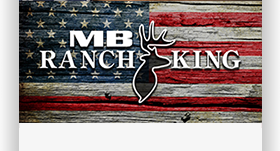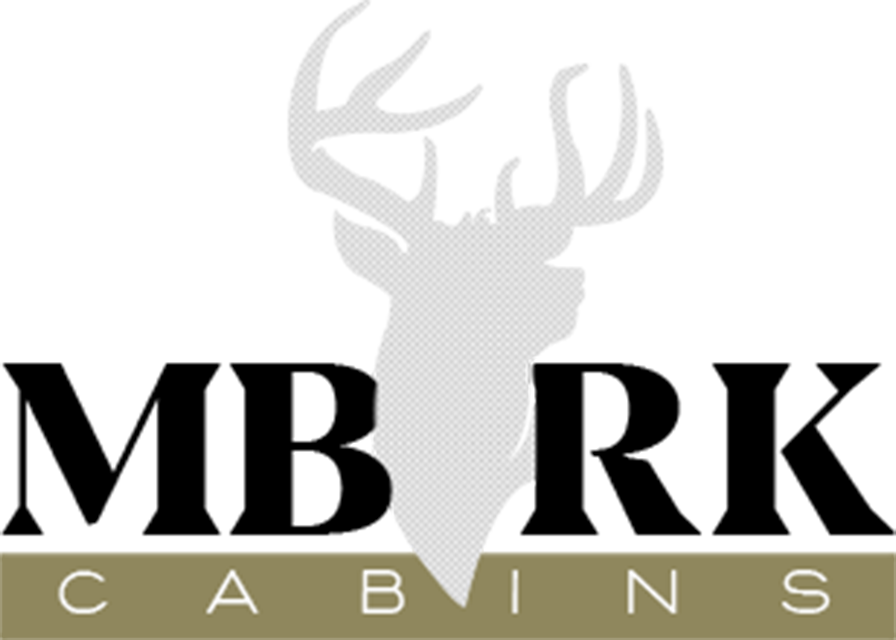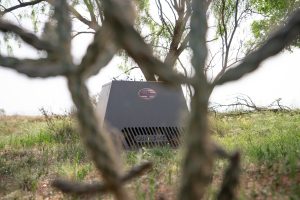
Help Your Quail Thrive
Help your quail thrive with the Quail Safe Feeder and QuailGuard medicated feed — now available through MB Ranch King. In partnership with Quail Safe, this proven system targets harmful parasites while supporting quail health year-round. With QuailGuard now distributed through BWI Companies across Texas, Oklahoma, and the Southeast, it’s easier than ever to protect and rebuild your wild quail populations. Contact Quail Safe to learn how to get started with your program today.
Why Feeding Wild Quail Matters

Feeding wild quail strategically is one of the most effective conservation tools available today. Modern land use changes, drought cycles, and parasitic infections have created challenges that wild quail populations cannot always overcome without help. Supplemental feeding, when done correctly, boosts survival, improves body condition, increases nesting success, and helps birds survive environmental stressors. When paired with parasite treatment programs like QuailGuard, proper feeding isn’t just beneficial—it can transform a property’s quail population trajectory.
Research shows supplemental feeding can dramatically boost quail survival during extreme weather or lean food years. Birds provided with feed show higher winter survival rates, enter breeding seasons in better condition, and have increased reproductive success, resulting in larger fall coveys. Quail rarely die of old age, as most succumb to predation or environmental stressors before reaching advanced age. During the breeding season, coveys often break up into smaller groups or pairs as part of their natural social behavior. With successful feeding and management, the number of coveys or individual quail on a property can increase significantly.
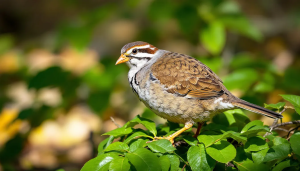
Understanding Quail Behavior: The Key to Effective Conservation
Understanding quail behavior is at the heart of successful conservation. Quail, commonly called blue quail in some regions, are social birds that thrive in groups known as coveys. Observing how these birds interact, feed, and move across the ground helps us design better quail-safe environments and reduce feed waste. Quail spend much of their time foraging for food on the ground, eating a diverse diet of seeds, insects, and leafy greens. Ensuring they have easy access to these food sources is vital for their health and survival.
Quail are also prey for a variety of predators, so their natural behaviors—like sticking close to cover and moving in groups—are essential survival strategies. By studying these patterns, we can place feeders and create habitats that minimize risk and maximize safety. Habitat loss and fragmentation can disrupt these behaviors, making it even more important to understand how quail respond to changes in their environment. When we take the time to learn about quail behavior, we can develop conservation strategies that not only reduce feed waste but also support thriving, resilient populations. A comprehensive approach that considers quail behavior, ecology, and conservation biology is key to long-term success.
Feeding Quail the Right Way: A Proven Solution
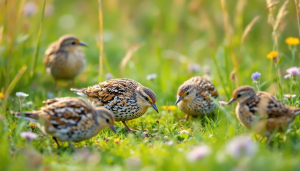
Properly pairing Quail Safe Feeders with QuailGuard medicated feed is critical for successful quail conservation. This product is specifically designed for wild quail management, with the feeder mechanism ensuring effective food distribution and targeted delivery of medicated feed. Wild quail are a valued game bird species, and proper feeding and parasite control are essential for their conservation and for supporting healthy game bird populations. Designed to work together, this system combats two of the most damaging parasites facing wild quail: eyeworms (Oxyspirura petrowi) and cecal worms (Aulonocephalus pennula). These parasites impair vision, nutrition, and overall survival, leading to long-term population declines if left untreated. Additionally, 63% of QuailGuard’s proceeds are directly reinvested into wild quail research and conservation through the Park Cities Quail Coalition (PCQC). Every bag helps fund critical science to protect these iconic birds.
QuailGuard Feeding Data: What You Need to Know
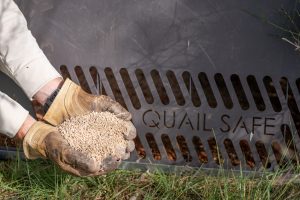
- Daily Consumption per Quail: 15–20 grams (about 0.5–0.7 oz)
- 50-Pound Bag of QuailGuard: Provides approximately 1,296 daily quail feedings
- Recommended Amount: Load each Quail Safe Feeder with 50 pounds for each 21-day treatment cycle. When filling the feeder, pour the feed slowly and evenly to prevent spillage and ensure even distribution throughout the container.
- Feeder Capacity: Each Quail Safe Feeder holds up to 150 pounds of feed. Filling the feeder to its full capacity ensures continuous access to feed for your birds.
- Duration: Fully loaded, one feeder can support about 45 quail for approximately 86 days at average consumption rates. Consumption rates vary seasonally. After each 21-day cycle, it is easy to refill the feeder, making maintenance simple even for children.
Using an efficient feeder system can cut feed waste by nearly half, which saves you money. The price advantage of a no waste feeder means lower overall feed costs and greater affordability for quail owners.
Treatment Protocols: Spring and Fall Cycles
Spring Treatment:
- Timing: March 1–May 1 (earlier is better)
- Duration: 21 consecutive days
- Purpose: Reduce parasite loads prior to nesting season, improving hen survival, egg production, and chick survival
- Follow-Up: After treatment, switch to high-protein (21% crude) non-medicated crumble feed
Fall Treatment:
- Timing: August 1–October 1 (later is better)
- Duration: 21 consecutive days
- Purpose: Eliminate parasites ahead of winter stress and prevent transmission from intermediate hosts (grasshoppers and crickets)
Strategic Feeder Placement
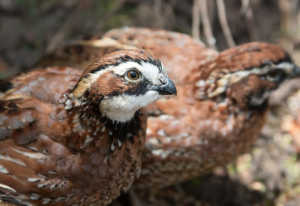
Proper placement is essential to feeder effectiveness and predator avoidance:
- Feeder Density: One feeder per 100–300 acres is recommended, adjusting density based on habitat quality and quail population density. For smaller properties, increase density to one per 50–100 acres if habitat varies significantly. On larger properties focus feeders on the most productive habitat for quail.
- Location Tips:
- Position feeders near dense brush, woody vegetation, or vine tangles to provide immediate cover from predators.
- Place feeders inside the coop, cage, or enclosure for easier maintenance and reduced waste. This setup is especially suitable for backyard or patio environments, making it ideal for small-scale quail keepers.
- Consider wall-mounted or cage-mounted feeder options to prevent spillage and dumping, which is a common problem with other feeders.
- Use a sturdy container with specially designed holes that control feed flow and minimize spillage. The right cut and placement of each piece in the feeder design help prevent birds from raking out or spilling a lot of food.
- The feeder’s lid helps keep debris out and can serve as a perch for quail, while additional lids are available as accessories to further prevent spillage and contamination.
- The feeder is easy to keep clean, and its design allows for quick cleaning and refilling, even by children, making it family-friendly.
- This feeder system is also effective for chickens, preventing them from dumping feed and reducing mess inside the coop or cage.
- Quail can easily learn to use the feeder, making it user-friendly for both birds and owners.
- Many users are pleased with the results, finding the feeder to be a great and perfect solution for quail keepers. Several items and accessories are available to customize your setup.
- Avoid open fields, hilltops, or areas under large trees to reduce exposure to aerial predators.
- Connect feeders with natural cover corridors such as brushy fence rows or hedgerows, ensuring quail can safely travel to and from feeders without crossing open ground.
Strategically placed feeders provide safety and convenience, helping quail survive and thrive in challenging conditions.
Overcoming Common Challenges in Wild Quail Management

Managing wild quail populations comes with its own set of challenges, but with the right strategies, these can be overcome. One of the biggest issues is feed waste, which not only costs money but can also attract unwanted predators and disrupt the balance of the ecosystem. Using quail-safe feeders is an effective way to ensure that quail get the food they need without unnecessary waste. These feeders are designed so that only quail can access the feed, helping to keep food available for the birds while minimizing spillage and loss.
Creating a quail-friendly habitat is another important step. Planting native vegetation, reducing the use of pesticides, and building brush piles all contribute to a safer, more supportive environment for quail. Predators such as hawks, owls, and foxes are a constant threat, so it’s crucial to design feeding and shelter areas with predator avoidance in mind. Blue quail, as they are often referred to due to their distinctive coloring, have specific ecological needs that must be met for populations to thrive. By understanding their food preferences, social behavior, and habitat requirements, we can address the core problems facing quail today. Effective management is a long-term commitment, requiring adaptability and a willingness to respond to changing conditions in the field.
Beyond Treatment: Year-Round Feeding Strategy
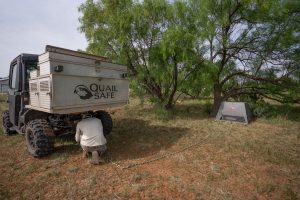
After completing the 21-day QuailGuard medicated cycle, transition to feeding Quail Safe non-medicated crumble feed to sustain energy levels, promote overwinter survival, and improve breeding success in the following spring. Year-round nutritional support ensures populations remain stable and resilient by providing quail with access to the variety of foods they eat, such as seeds, insects, and berries, supporting their natural diet and overall health.
Built to Last: Why the MB Ranch King Quail Safe Feeder Matters
The Quail Safe Feeder, proudly manufactured by MB Ranch King in partnership with Quail Safe®, represents over five years of field experience and design refinement. With more than 1,000 units deployed across the United States, the Quail Safe system is proven effective, now upgraded for quality, durability, and functionality. The feeder’s large size and substantial weight provide great stability and a lot of feed capacity, making it perfect for extended use in the field. Every feature is designed with quail biology in mind—from the means of restricting access using specialized feed ports and cut holes, to weather-protected construction with secure lids for easy refill. As an example of ongoing improvement, a custom piece can be added to further limit feed flow and prevent spill, based on feedback from field use.
👉 View the Quail Safe Feeder at MB Ranch King here.
Conservation Efforts and Community Involvement
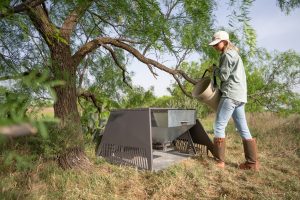
Quail conservation is most successful when it becomes a community effort. Involving landowners, hunters, conservation organizations, and local residents creates a collaborative approach that benefits both quail and the broader ecosystem. Tools like quail-safe feeders and targeted feeding programs help reduce feed waste and create safer environments for these birds, but the impact is even greater when communities work together.
Community-based conservation initiatives, such as habitat restoration projects or educational workshops, foster a sense of ownership and responsibility. By learning about quail ecology and the importance of reducing feed waste, more people are inspired to take action. Supporting conservation can be as simple as choosing quail-friendly products—like specialized feeders or birdhouses—that help create quail-safe spaces and minimize waste. Education and outreach are essential, helping to spread awareness and encourage participation in conservation efforts. When communities unite around the goal of protecting quail, everyone benefits—from the birds themselves to the biodiversity of the entire region.
Future Directions for Quail Conservation
The future of quail conservation is bright, thanks to ongoing research, innovation, and community engagement. Continued monitoring and scientific study are essential for understanding how quail populations respond to different management strategies and environmental changes. New technologies, such as camera traps and GPS tracking, are making it easier to monitor quail movements and adapt conservation efforts in real time.
Looking ahead, restoring and creating quail-friendly habitats will remain a top priority. Planting native vegetation and building brush piles provide essential cover and food sources for quail and other birds. Community involvement will play an even greater role, with social media and outreach programs helping to connect people and share best practices. By working together and embracing a variety of conservation tools, we can ensure that quail populations remain strong for generations to come. The commitment to quail conservation is ongoing, but with dedication and innovation, the outlook for these remarkable birds is full of hope.
Interested in Carrying QuailGuard?
QuailGuard is proudly distributed through BWI Companies, covering Texas, Oklahoma, and the entire Southeast. If you’re interested in offering QuailGuard medicated feed, contact Quail Safe:
📞 833-667-3262
📧 contact@quailsafe.com

